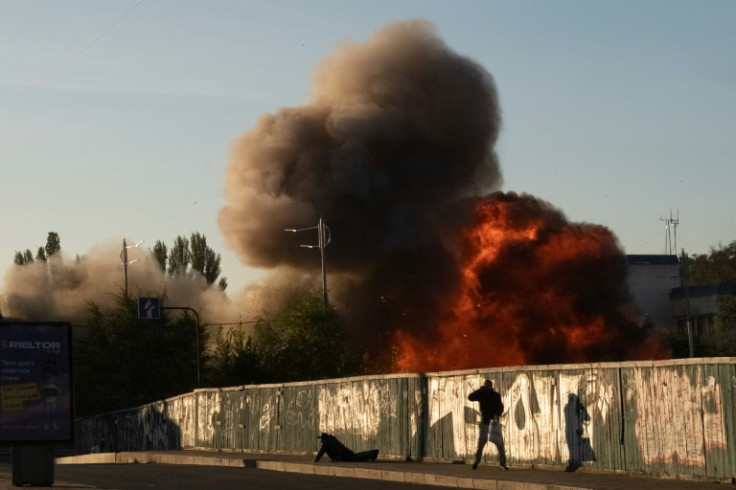Iran Readies Short-Range Ballistic Missile Deliveries To Russia As US Plans Sanctions: Report
KEY POINTS
- Ukraine condemned Iran for the alleged sale of drones to Russia used for the attack on its capital Kyiv
- Washington fears supply of Iranian weapons will help Moscow offset its rapidly depleting stockpile of ammunition
Amid Western allegations and persistent denials by both Tehran and Moscow of any arms supply to Russia, reports say that Iran is now preparing its first consignment of Iranian short-range ballistic missiles. The U.S. is meanwhile preparing to further its crackdown on Iran for helping Russia in the war on Ukraine.
A report in the Washington Post citing an intelligence assessment has said that Iran's armaments industry is preparing its first shipment of Fateh-110 and Zolfaghar missiles bound for Russia.
Following the Washington Post report, Politico on Monday reported that the U.S. intends to further its Iran crackdown to help Russia. The move could include sanctions and export controls against third parties that help Tehran and Moscow.
Ukraine condemned Iran for the alleged sale of drones to Russia and called for Western sanctions against Tehran after the capital Kyiv was hit by several 'kamikaze' drones Monday, killing at least four people.
Meanwhile, following the media report, Tehran denied the sale of Iran's weapons to Russia, terming the allegations as being "based on political goals" and "fueled by Western sources."
"Iran has repeatedly declared that it is not a party to the war between Russia and Ukraine," Iran's Foreign Ministry spokesman Nasser Kanaani said, asserting that Tehran has not supplied any weapons to any of the warring parties in Ukraine.
According to the Washington Post report, the two Iranian short-range ballistic missiles being supplied to Russia are capable of striking targets at distances of 300 and 700 kilometers (approximately 200 to 400 miles), respectively. The report says, if carried out, it would be the first delivery of such missiles to Russia since the beginning of the war in Ukraine.
The report quoted missile experts as saying that the powerful surface-to-surface missiles would give Russia more options and punch at a time when Kyiv's forces are reclaiming captured territory in southern and eastern Ukraine.
Russia has so far deployed Iranian Mohajer-6 and Shahed-136 drones, also referred to as kamikaze drones, which were used to target infrastructure and buildings in Kyiv on Monday. Reports say Russia repainted these Iranian drones and given them Russian names to hide their origin.
While the Shahed-136 drones are relatively low-cost drones programmed to fly automatically to a set of GPS coordinates with a payload of explosives, the Mohajer-6 is similar in size and functionality to the Turkish-made Bayraktar TB-2 drone used by Ukrainian forces.
Washington fears that the earlier supply of drones and the upcoming shipment of short-range ballistic missiles will help Moscow offset its rapidly depleting stockpile of weapons after eight months of the war in Ukraine.
The U.S. government had on Friday warned that it would impose sanctions on people, countries and companies that offer ammunition to Russia or support its military-industrial complex.
It was earlier reported that faced with global sanctions that have hampered its ability to maintain its military supply lines, Moscow was turning to pariah states like Iran and North Korea to buy shells and rockets. Fears have also been expressed that the depleting of military resources could force Putin to dip into Russia's tactical nuclear arsenal to achieve victory or at least freeze the conflict in Ukraine.

© Copyright IBTimes 2025. All rights reserved.






















